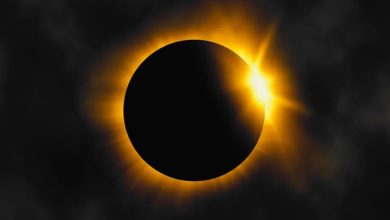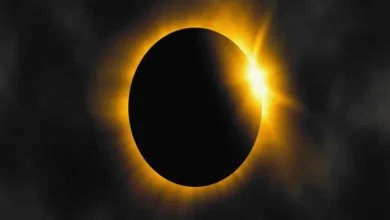NOAA Warns of Solar Magnetic Storm

NOAA’s Space Weather Prediction Center (SWPC) has issued a solar magnetic storm alert on Sunday after sun-monitoring satellites recorded an X 1.1 solar flare and then a high-speed coronal hole jet, or CH HSS.
Impact, Potential Northern Lights Display
The intense solar magnetic storm occurs after volcanic eruptions from the sun send plasma toward Earth, with the potential to produce northern lights as far south as Alabama and northern California through Monday. The aurora borealis occurs when charged particles from the sun interact with the Earth’s atmosphere, leading to the appearance of what are known as the northern and southern lights.
Severity, Classification of Geomagnetic Storms
On the five-point geomagnetic storm scale, space experts believe the first wave of energy could be classified as either G1 or G2 but on Monday it will rise to G3. However, over the past 24 hours, severe weather conditions have been observed in space G4 and are expected to continue, according to the SWPC dashboard. A G1 geomagnetic storm is the weakest and typically produces the northern lights over Alaska and Canada.
Viewing Locations and Forecast
The G3 classification will likely allow the aurora to be seen as far south as Washington, Wisconsin, and New York if skies are clear. With G4 conditions (level 4 of 5) observed and forecast through Monday, northern lights displays could be seen as far south as Alabama and northern California. The amount of geomagnetic activity is also monitored by geomagnetometers, and the event is measured on a Kp index scale, which ranges from 0 to 9.
Expected Auroral Activity, Viewing Areas
A G3 event with a high Kp index value caused the northern lights to be observed as far south as Las Vegas in December. Space experts believe that the upcoming event could reach a Kp value of at least 6, which would put cities such as Seattle, Minneapolis, Green Bay, and Syracuse, New York, in the viewing area. The Alaska Fairbanks Geophysical Institute expects high aurora activity at Kp-6 levels through Monday night.
Public Awareness, Forecast Challenges
“The public should not expect negative impacts, and no action is required, but should stay properly informed of the storm’s development by visiting our webpage,” the SWPC said on Sunday. The FOX Forecast Center expects there to be a lot of obstructions in the sky on Sunday and Monday nights, which could complicate viewing. A large storm system will move through the heart of the country, bringing heavy rain and thunderstorms. In addition to increased cloud cover, March’s full worm moon will light up the sky, obstructing the view of other celestial objects. The faint lunar eclipse will begin just before 1 a.m. EST on Monday and last until about 5:30 a.m. when the moon passes through the Earth’s shadow. Space experts acknowledge that determining the exact strength of geomagnetic activity is a challenge, even though it occurs frequently.
Related Topics :
Halo Space to Launch Space Flights from Saudi Base
UNESCO Announces Growth in Solar Research in Saudi Arabia
ACWA Power Commences Commercial Operation of Sudair Solar Plant






